Distributed ledger technology (DLT) and blockchain
DLT or Distributed Ledger Technology.
Distributed ledger technology, also known as DLT, is a topic that is gaining momentum in various sectors of business life.
Banks, insurances, supply-chain, even institutions are considering to operate this way.

Allowing the structuring and management of asset transactions in a decentralized manner, this model inspires and interests both private and public market players.
Structuring, transactions, data, decentralization…etc.
A slight resemblance to blockchain technology, don't you think?
Their basic principle is to guarantee a decentralized and secure organization of transactions.
Indeed, blockchain is a form of distributed ledger, a form of DLT.
Be careful, however, the reverse does not apply.
So, let's see in detail, on which points, DLT and Blockchain are similar and on which, they differ.
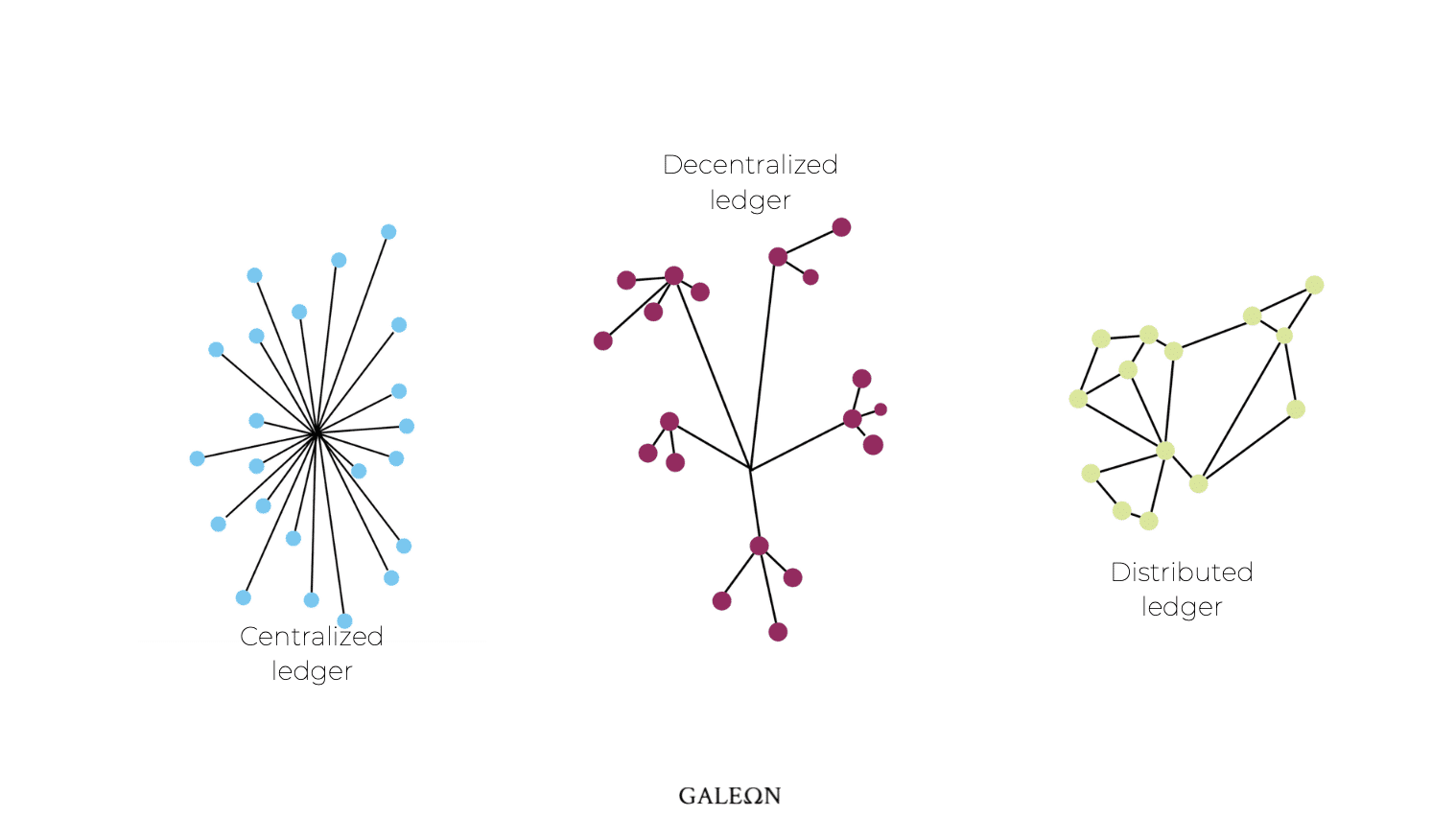
Part 1 - The blockchain, a sort of a distributed ledger
Generally, we hear more about blockchain due to its association with Bitcoin and crypto-currency.
Linked to DLT technology, blockchain offers an optimal solution for data storage and transfer.
A blockchain forms a register of encrypted transactions.
When transactions are initiated, they will be validated or not by the network nodes (nodes are computers connected to the network and each holding a copy of the transactions).
From then on, the validation process will be done block by block.
This process requires a certain amount of technology, but it ensures that the data is effectively protected.
Once validated, the blocks of transactions are added to the previous blocks.
How is the blockchain useful for these transactions?
- For its data storage capabilities,
- The fact that it is not necessary to involve a third party,
- A validation process that reinforces security,
Part 2 - The concept of distributed ledger (DLT)
A/ Concept
Distributed ledgers represent a database that is intended to be distributed over one or more networks.
Depending on whether this distribution is public or private, it will be more or less difficult to alter or delete this information.
What types of sectors and data exchanges are interested in?
- Financial services, legal services,
- Energy,
- Insurance, real estate,
- Health care systems,
- Electronic systems and clouds,
- Public records, supply chain
For distributed ledgers, managing a database is a little different than for blockchains, since it involves participants.
It requires at least a manual intervention.
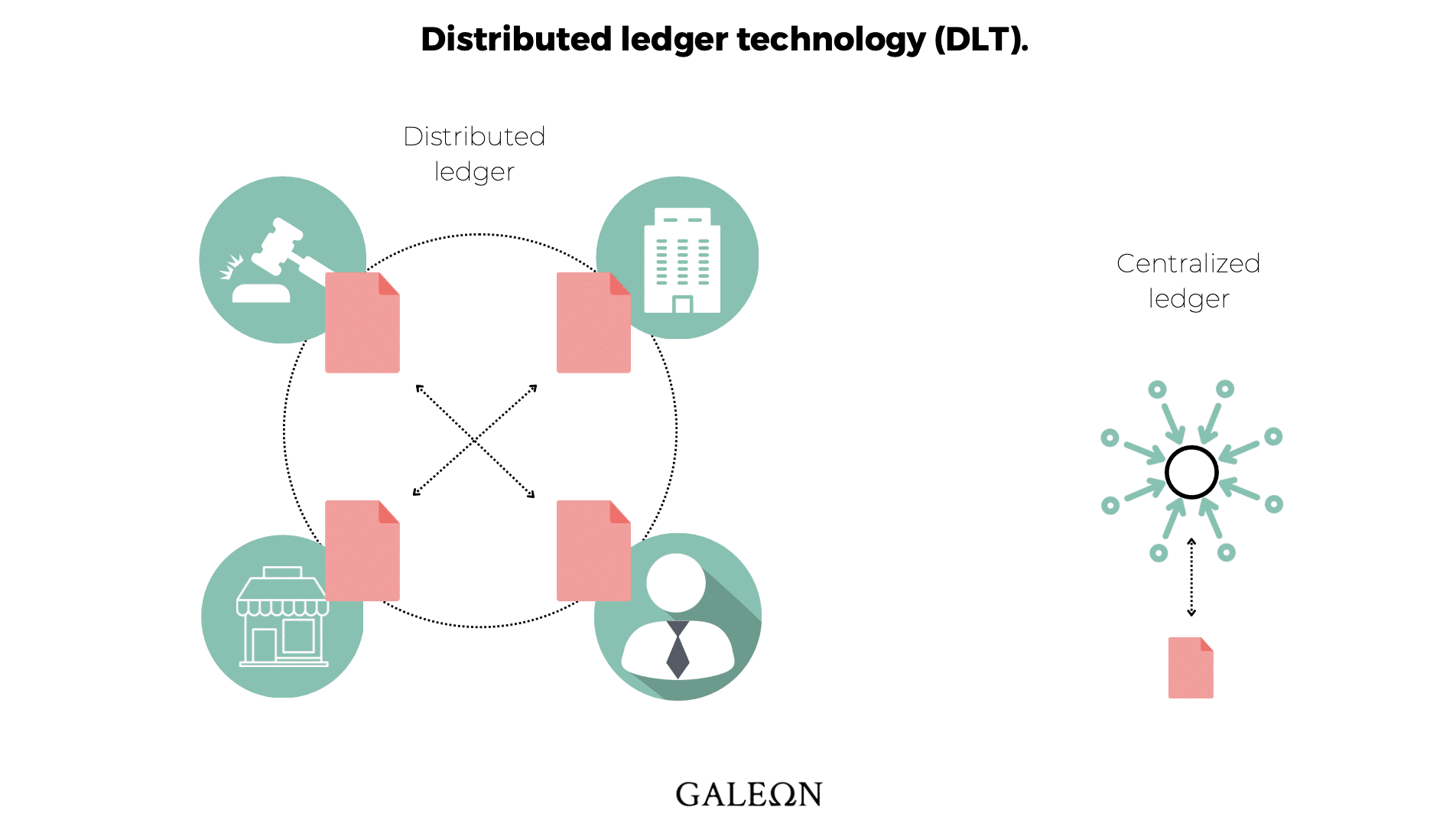
B/ How distributed ledger works
A transaction is initiated by a user, what are the steps for this transaction to be recorded in the ledger?
The transactions will be subject to a consensus between the participants.
Consensus is the procedure for validating and sharing data with the agreement of the network members. It works according to an algorithm.
Each participant commits to respecting the rules set out in the protocol.
All participants will save a copy of the ledger on the network nodes.
For any modification, everyone will cast a vote to ensure that the update follows the protocol.
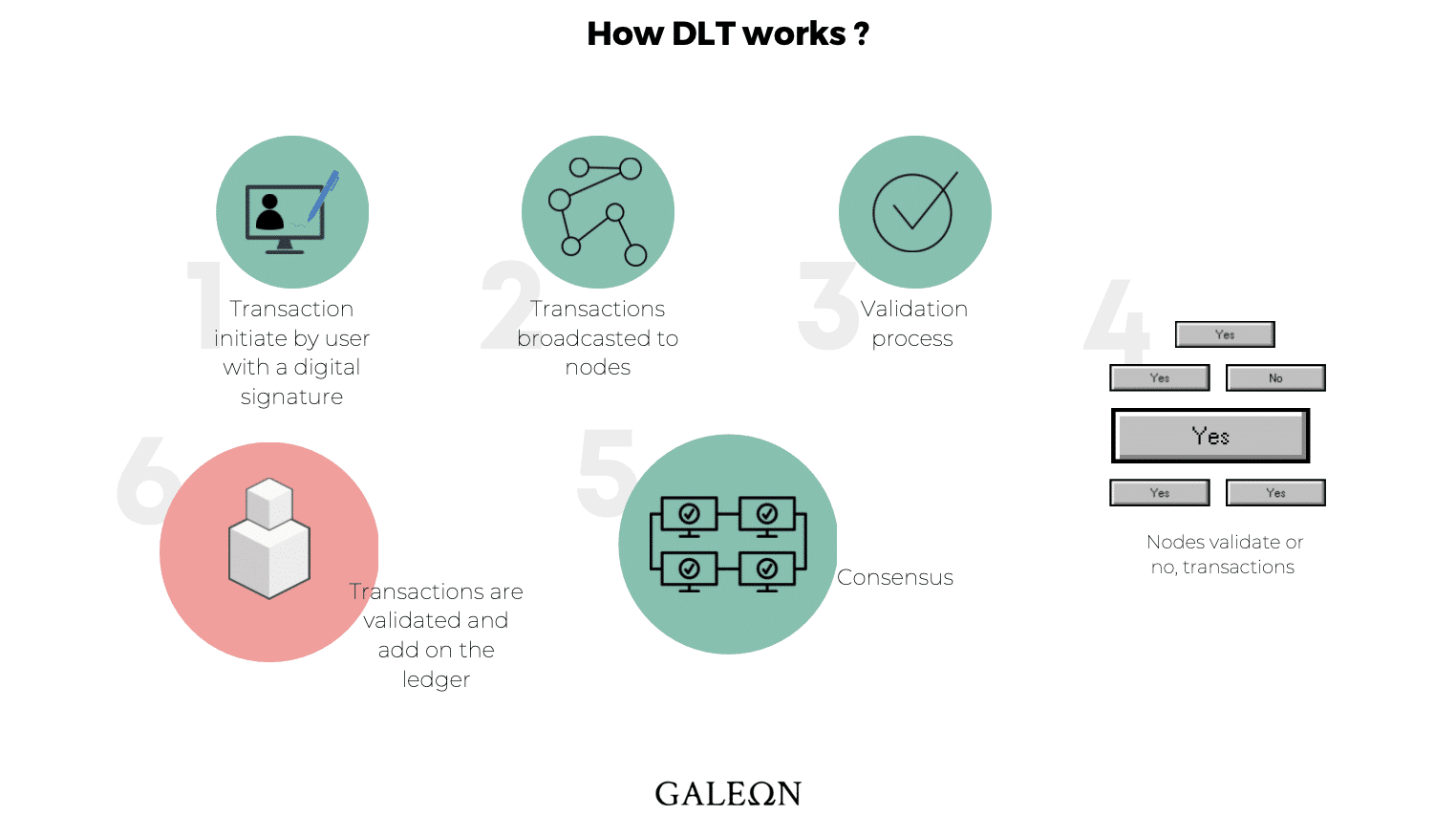
C/ The diversity of DLT networks
The networks that manage distributed ledgers are organized in a decentralized or non-decentralized manner, and can even opt for a hybrid operation.
1. Public ("permissionless") ledger:
There is no central authority to authorize access to the network or not.
Anyone can become a trusted actor in the network, be part of a node or even validate transactions (mine).
Distributed records are kept in blocks, updated and sequenced using cryptography.
Entries cannot be altered, and there is very little chance that they will be undone.
Like the blockchain, each participant is rewarded with tokens.
2. Private ledger
Unlike a public ledger, here there is a central authority that controls access.
In this case, the information circulating on the network can only be validated by trusted actors, or nodes, which are chosen and regulated by developers or a central person.
What we remember about private ledgers is their similarity to a hierarchical organization.
A specific entity or institution is placed upstream as the ultimate source of decision making.
3. Hybrid ledger
As its characteristic indicates, the hybrid system oscillates between two types of ledgers.
Instead of concentrating the decision-making power in the hands of a single entity, a group of partners will make the decisions.
Thus, each partner has its own network node and must sign each block to validate it.
The network can be accessible to the rest of the public, or on the contrary, have restrictions.
Buy your first crypto easily in euro with Galeon
Part 3 - 4 Differences between DLT and blockchain
A/ A decentralized organization?
Although both concepts are linked to a decentralized organization, we have seen that in the context of DLTs, a central figure can be named.
This central figure makes it possible to organize the decision making between the partners (the peers).
In a blockchain, all participants are peers.
B/ Data recording methods
The recording of data is done in an automatic way as far as the blockchain is concerned. They will be assimilated within the block sequences.
In the context of a distributed ledger, the participants decide whether or not to proceed with registration. Whether or not this or that data should be considered essential.
C/ Data access and transparency
Depending on the protocol and the common rules established in a DLT, certain information may or may not be accessible, depending on the user's status.
In this logic, data that is not freely available will have to go through a validation procedure to be included in the database. We can imagine, for example, more sensitive data.
The blockchain works in such a way that each data can be consulted and must therefore be validated by the majority of the members of the server.
D/ The management cost
Finally, we will end with this last difference, related to the management costs.
As you can imagine, the operation of the blockchain is more automated than a distributed ledger.
In other words, we save more time, and we don't need to call on any logistic support.
The costs will therefore be lower than in DLTs.
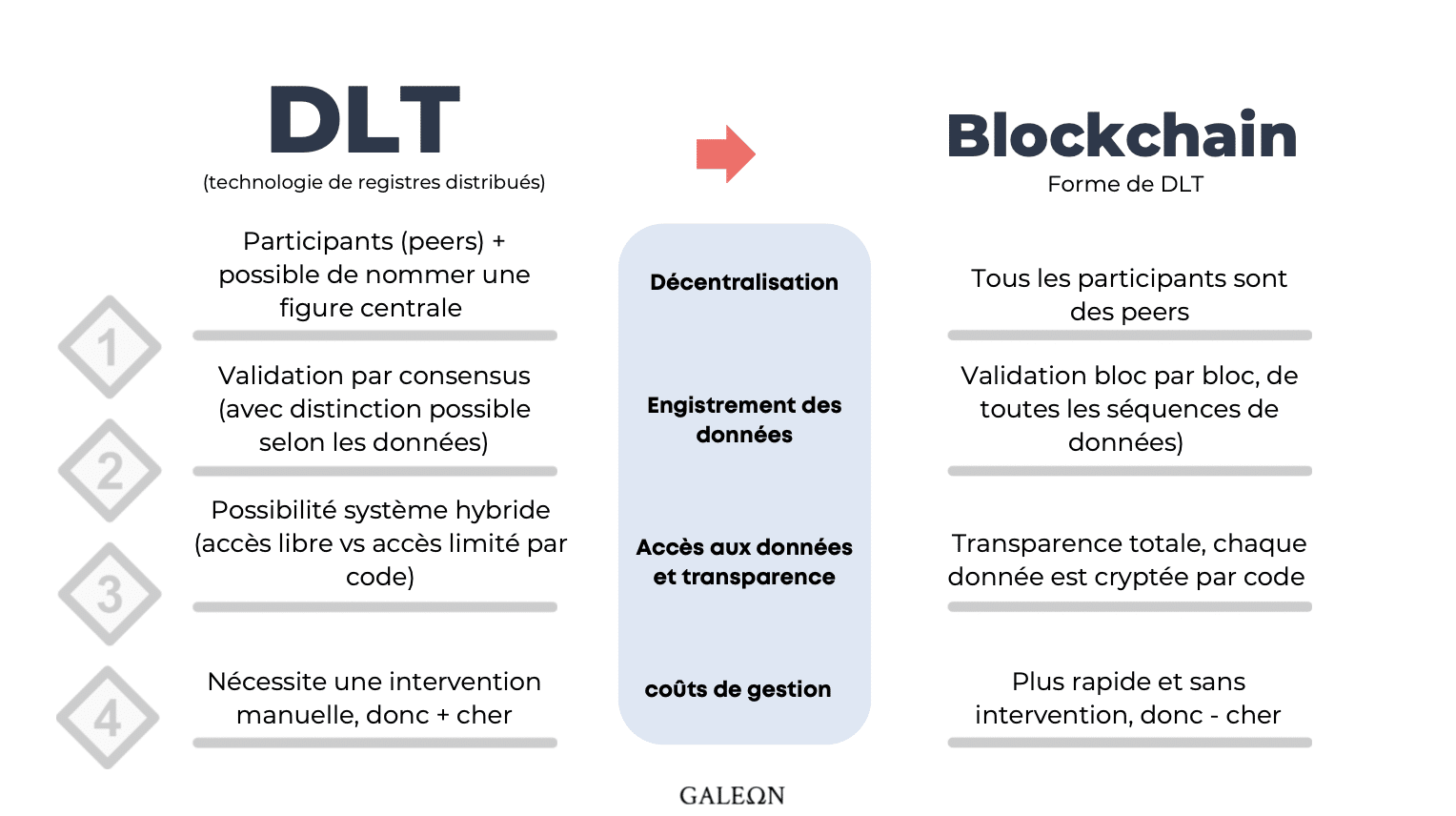
Conclusion
What we can say today is that, on the one hand, we have a number of actors, notably banks and companies, who are increasingly interested in DLT.
And this is understandable because institutions or entities could keep some control over data protection decision making, while ensuring more security.
On the other hand, we find blockchain, which continues to seduce by its decentralized and independent organization.
The challenge now is to be able to erase this image of a database specifically dedicated to crypto. But showing that it could be more than useful for other matters.
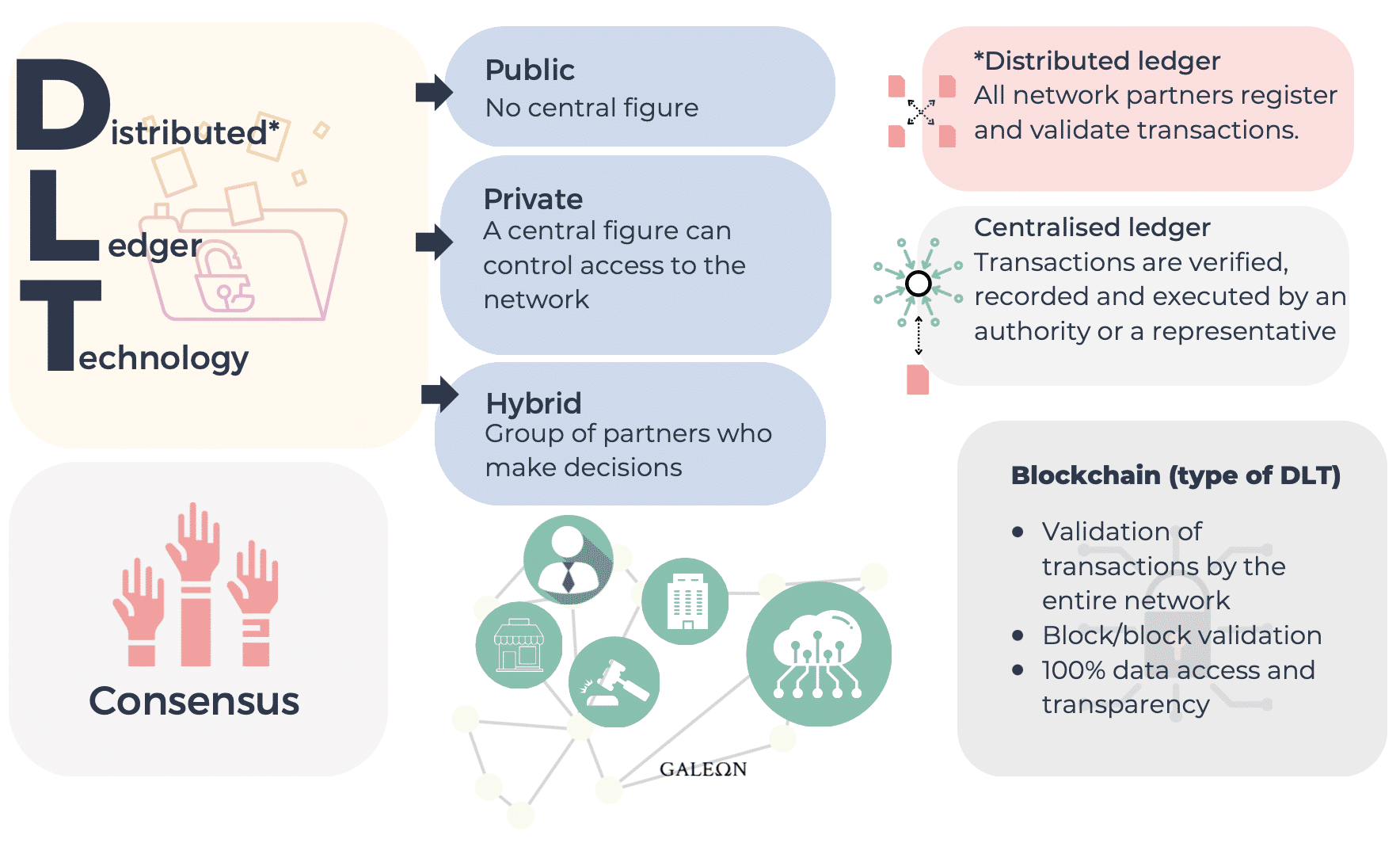
The purpose of this article is above all to simplify technical concepts related to crypto-currency, in order to make them accessible to everyone. These words engage only their author. It is not intended to advise the reader on his investments.
Do you want to know more about Galeon ?
Subscribe to our newsletter !


